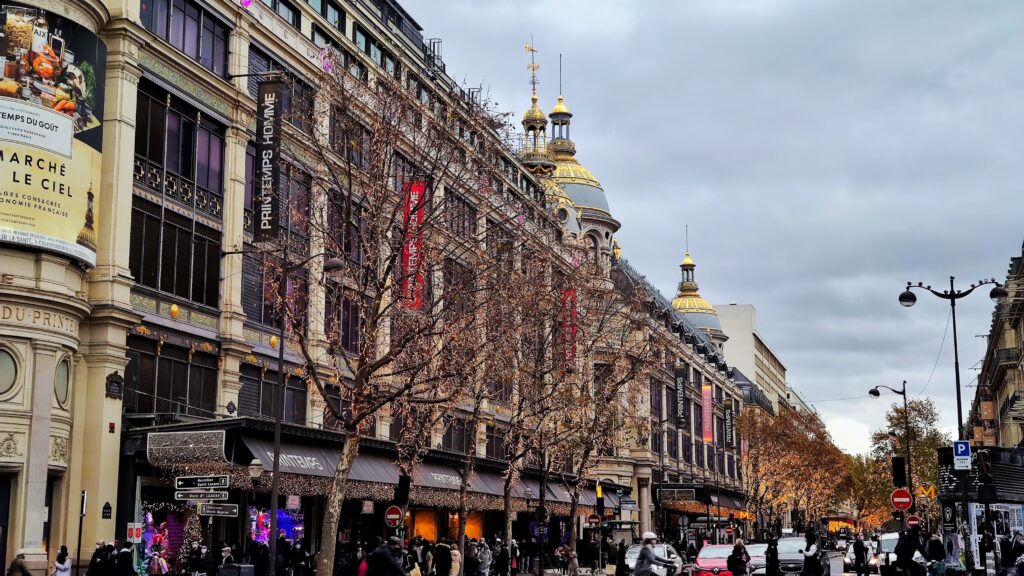French Luxury Marketing: A Different Paradigm
Last time, we explored the US marketing landscape, focusing on immediate sales and “Benefit Loyalty.” Today, we are turning our attention to French Luxury Marketing, where storytelling and “Cult Loyalty” play a significant role.
The Holistic Approach
French luxury brands adopt a different mindset: they employ a holistic marketing strategy where marketing transcends mere promotion and sales; it becomes an embodiment of the brand image, akin to a religion or even a cult.
The Theory of Cult Loyalty
French luxury brands cultivate what I have termed “Cult Loyalty,” aiming to engage customers across the entire marketing funnel. Cult Loyalty serves as a captivating dream, skillfully crafted by the brand, from which customers do not wish to awaken.
How does one create Cult Loyalty? Most modern luxury houses offer both high-end and consumer lines. The brand itself is a narrative, a persona that crafts a dream many aspire to. In the realm of Chanel, for instance, the veracity of Coco Chanel’s life story is irrelevant; its sole purpose is to fortify the brand image. The luxury line serves as an extension of this image – elegant, opulent, and prohibitively expensive. This exclusivity enhances the brand’s allure, making it an object of desire that only a select few can attain.
This creates a cycle of consumption. Wealthy individuals derive social capital from owning luxury items, reinforcing their positive feelings and encouraging repeat purchases. Those who cannot afford the high-end products still find value in the brand’s more accessible offerings, gaining a sense of self-esteem that also promotes future purchases.
The Power of Storytelling
Luxury brands do not merely set high prices, they engage in storytelling. Each product and each store narrates a unique yet consistent tale, setting the brand apart from competitors. This narrative strategy justifies the brand’s premium pricing. For instance, many may recall the viral campaign for Jacquemus’ Le Bambino bag, which featured oversized handbags rolling through the streets of Paris in a 3D animation.
Visit any Dior store, and you will encounter a consistent design language and similar product displays. Dior Montaigne, for example, showcases a wall dedicated to its classic designs, ranging from couture to hats and bags. The iconic white A-shaped dress serves as a prototype, representing the well-known Dior shape that has been a cornerstone of the brand’s design philosophy for years. Even the current designer, Maria Grazia Chiuri, occasionally revisits this shape to maintain the brand’s DNA. The ultimate goal of luxury storytelling is brand recognition: wherever or whenever you encounter a product, you should immediately know to which brand it belongs.
The Limitations and Nuances of Cult Loyalty
While overt marketing promotions are rare, this does not mean that French luxury brands neglect conversion. Their consumer lines serve as cash cows and are promoted in a manner similar to standard consumer goods in the US.
Cult Loyalty is a comprehensive strategy, but it is not without flaws. Brands may experience a “halo effect” as customers buy into the dream they have created. However, this is not something a brand can force. Ultimately, customers decide to engage based on a variety of factors, including brand personality, perceived benefits, and affordability.
In my next blog, we will build on these insights by applying various marketing strategies to improve Delta Air Lines’ customer engagement and brand loyalty. Stay tuned.
 Do you find this article helpful or wish to discuss it further? Contact me at [email protected] or read more about me.
Do you find this article helpful or wish to discuss it further? Contact me at [email protected] or read more about me.
Transatlantic Marketing Philosophies: Decoding US and French Strategies (2)
French Luxury Marketing: A Different Paradigm
Last time, we explored the US marketing landscape, focusing on immediate sales and “Benefit Loyalty.” Today, we are turning our attention to French Luxury Marketing, where storytelling and “Cult Loyalty” play a significant role.
The Holistic Approach
French luxury brands adopt a different mindset: they employ a holistic marketing strategy where marketing transcends mere promotion and sales; it becomes an embodiment of the brand image, akin to a religion or even a cult.
The Theory of Cult Loyalty
French luxury brands cultivate what I have termed “Cult Loyalty,” aiming to engage customers across the entire marketing funnel. Cult Loyalty serves as a captivating dream, skillfully crafted by the brand, from which customers do not wish to awaken.
How does one create Cult Loyalty? Most modern luxury houses offer both high-end and consumer lines. The brand itself is a narrative, a persona that crafts a dream many aspire to. In the realm of Chanel, for instance, the veracity of Coco Chanel’s life story is irrelevant; its sole purpose is to fortify the brand image. The luxury line serves as an extension of this image – elegant, opulent, and prohibitively expensive. This exclusivity enhances the brand’s allure, making it an object of desire that only a select few can attain.
This creates a cycle of consumption. Wealthy individuals derive social capital from owning luxury items, reinforcing their positive feelings and encouraging repeat purchases. Those who cannot afford the high-end products still find value in the brand’s more accessible offerings, gaining a sense of self-esteem that also promotes future purchases.
The Power of Storytelling
Luxury brands do not merely set high prices, they engage in storytelling. Each product and each store narrates a unique yet consistent tale, setting the brand apart from competitors. This narrative strategy justifies the brand’s premium pricing. For instance, many may recall the viral campaign for Jacquemus’ Le Bambino bag, which featured oversized handbags rolling through the streets of Paris in a 3D animation.
Visit any Dior store, and you will encounter a consistent design language and similar product displays. Dior Montaigne, for example, showcases a wall dedicated to its classic designs, ranging from couture to hats and bags. The iconic white A-shaped dress serves as a prototype, representing the well-known Dior shape that has been a cornerstone of the brand’s design philosophy for years. Even the current designer, Maria Grazia Chiuri, occasionally revisits this shape to maintain the brand’s DNA. The ultimate goal of luxury storytelling is brand recognition: wherever or whenever you encounter a product, you should immediately know to which brand it belongs.
The Limitations and Nuances of Cult Loyalty
While overt marketing promotions are rare, this does not mean that French luxury brands neglect conversion. Their consumer lines serve as cash cows and are promoted in a manner similar to standard consumer goods in the US.
Cult Loyalty is a comprehensive strategy, but it is not without flaws. Brands may experience a “halo effect” as customers buy into the dream they have created. However, this is not something a brand can force. Ultimately, customers decide to engage based on a variety of factors, including brand personality, perceived benefits, and affordability.
In my next blog, we will build on these insights by applying various marketing strategies to improve Delta Air Lines’ customer engagement and brand loyalty. Stay tuned.
![]() Do you find this article helpful or wish to discuss it further? Contact me at [email protected] or read more about me.
Do you find this article helpful or wish to discuss it further? Contact me at [email protected] or read more about me.
